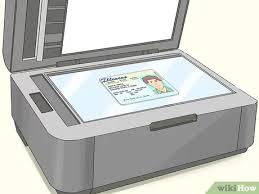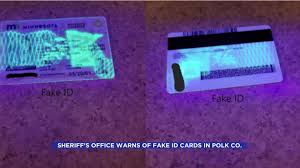ID card manufacturing
Introduction
The need for secure identification methods has never been more critical. Whether for government institutions, corporations, or educational facilities, ID cards play a vital role in ensuring controlled access, personal identification, and operational security. The process of ID card manufacturing is a complex one, involving several stages, from material selection to security features, each aimed at creating a reliable and functional identity solution.
This article will explore the intricate world of ID card manufacturing, delving into its history, the evolution of technologies, and the current trends that define the industry. From smart card integration to the growing importance of sustainable materials, we'll investigate how businesses can optimize their identity solutions to meet modern demands.
1. Understanding ID Card Manufacturing: The Basics
1.1 What is ID Card Manufacturing?
ID card manufacturing refers to the process of designing, printing, and encoding identification cards for a variety of purposes, including employee access, government identification, membership cards, and student IDs. This involves not just simple printing but the integration of several security technologies such as holographs, RFID chips, barcodes, and more.
1.2 Types of ID Cards
- PVC Cards: Standard plastic cards often used for simple ID cards. They are durable, inexpensive, and easy to print.
- RFID and Smart Cards: Cards that contain embedded chips allowing for radio frequency communication. These are widely used in access control and payment systems.
- Magnetic Stripe Cards: Common for credit and debit cards, these contain a magnetic stripe that stores information.
- Hybrid Cards: Cards that combine multiple technologies such as RFID, magnetic stripes, and chip encoding.
- Biometric ID Cards: The latest in ID card innovation, incorporating fingerprint, iris, or facial recognition technology for high-level security.
1.3 The Manufacturing Process Overview
- Design and Personalization: Designing an ID card involves selecting the size, colors, fonts, and logo placement. This stage often uses advanced software to ensure personalization for each cardholder.
- Card Printing: Printing methods such as dye-sublimation and retransfer printing allow high-resolution printing, which is necessary for sharp images and clear text.
- Lamination and Protection: Cards can be laminated with protective films to extend their life and safeguard against tampering.
- Encoding: Depending on the card's functionality, the next step might involve encoding data onto the card, either on a magnetic stripe, a chip, or via RFID technology.
- Quality Control: Each card is tested to ensure that the printing, lamination, and encoding meet the highest standards of quality and security.
2. Key Features and Benefits of Modern ID Cards
2.1 Enhanced Security Features
The inclusion of security features such as holograms, UV inks, and micro-text make ID cards more resistant to forgery and tampering. Modern ID cards are equipped with a range of security options to ensure authenticity.
2.2 Durability and Longevity
ID cards, especially those with lamination or made from polycarbonate, are built to last for years. The choice of materials and protective layers plays a significant role in their durability, making them ideal for institutions that need long-lasting identification methods.
2.3 Contactless Technology
The growing demand for contactless solutions, such as RFID-enabled cards, highlights the need for efficiency and convenience. These cards allow users to tap or swipe at terminals, providing fast and secure access.
2.4 Biometric Integration
By integrating biometric data, ID cards can provide a much higher level of security. This can be in the form of fingerprint scanning or even facial recognition, which adds an additional layer of authentication for sensitive areas or transactions.
2.5 Customization and Branding
ID cards are often designed with company logos, branding elements, and colors to reflect corporate identity. Personalization options also include name printing, unique ID numbers, and photo inclusion, which help distinguish each cardholder.
3. Market Analysis: Trends and Opportunities in ID Card Manufacturing
3.1 Global Market Overview
The global ID card manufacturing industry has been on a growth trajectory, driven by increasing security concerns, the rise of digital identification, and technological advancements. The market is estimated to be worth billions, with steady growth projected in the next five to ten years.
3.2 Key Market Segments
- Government and Public Sector: ID cards are essential for national identification, voting systems, and law enforcement.
- Corporate and Enterprise: Businesses use ID cards for employee identification, access control, and time tracking.
- Education: Schools and universities rely on ID cards for student identification, library access, and secure campus entry.
- Healthcare: Medical institutions use ID cards to manage patient records, provide secure access to facilities, and identify staff.
- Retail and Membership: Loyalty cards and membership cards are a huge part of customer engagement in the retail sector.
3.3 Growing Demand for Smart Cards
The demand for smart cards is rising, particularly in industries that require secure and contactless access control. Industries like banking, retail, and transportation are leading adopters of smart card technology, thanks to the convenience and enhanced security they provide.
3.4 RFID and Contactless Trends
The COVID-19 pandemic accelerated the demand for contactless solutions. Many industries now favor RFID-enabled ID cards for access control, payments, and transportation systems.
3.5 Sustainability and Eco-Friendly Solutions
With a growing emphasis on sustainability, many manufacturers are looking into biodegradable or recyclable card materials. Consumers and businesses are increasingly conscious of environmental impact, prompting the ID card manufacturing industry to innovate with greener solutions.
4. Target Audience: Who Needs ID Card Solutions?
4.1 Businesses and Corporations
Corporations, especially large-scale operations with multiple locations, rely heavily on secure ID card systems for access control, employee identification, and visitor management.
4.2 Government and Law Enforcement
Governments require ID cards for a wide range of applications, from driver’s licenses to national ID programs. Law enforcement agencies use secure cards for badges, credentials, and restricted access.
4.3 Educational Institutions
Schools and universities use ID cards for student identification, meal plans, library access, and dormitory security. Custom ID cards help distinguish students and staff while enhancing campus safety.
4.4 Healthcare Facilities
Hospitals and healthcare providers use ID cards to track patient information, grant secure access to medical staff, and control entry into sensitive areas like laboratories or pharmaceutical storage rooms.
4.5 Event Management and Entertainment
Large events, conferences, and concerts require ID badges or cards for both staff and attendees. These cards often include security features like QR codes or RFID chips for tracking attendance and controlling access to VIP areas.
4.6 Retail and Loyalty Programs
Retail businesses use custom cards for loyalty programs, gift cards, and membership rewards. These cards are often part of a company’s branding and customer engagement strategy, helping to build brand loyalty.
5. The Future of ID Card Manufacturing: Trends to Watch
5.1 Advanced Printing Technologies
Digital printing methods are continuing to evolve, providing higher resolution images, faster production times, and more detailed security features. Retransfer printing is becoming more popular, especially for high-quality ID card printing.
5.2 Blockchain for Secure Identification
Blockchain technology may become integral to ID card production, providing immutable records of identification and ensuring that data cannot be tampered with or forged.
5.3 The Rise of Mobile IDs
Mobile IDs are gaining traction as smartphones increasingly replace physical cards for identification purposes. While physical cards will not disappear, a hybrid system combining physical and digital ID solutions is likely to emerge.
5.4 AI and Machine Learning in Security
Artificial intelligence and machine learning are being explored for use in ID card security, particularly for fraud detection and prevention. These technologies can help spot counterfeit cards, tampered data, or security breaches in real time.
5.5 Eco-Friendly Materials
As environmental concerns grow, manufacturers are shifting towards sustainable materials. Expect to see more biodegradable cards, as well as recycling programs for expired or damaged cards.
Conclusion
ID card manufacturing is an essential industry, powering the identification needs of various sectors, from corporate offices to government agencies. As technology advances, ID card manufacturers are adapting to offer more secure, durable, and customizable solutions. The future of this industry looks bright, with innovations such as smart cards, blockchain, and eco-friendly materials on the horizon.
For businesses looking to invest in ID card manufacturing, understanding the latest technologies and market trends is crucial. With security and customization becoming top priorities, the ID card industry is set to evolve in exciting ways, ensuring that identity solutions keep pace with modern demands.
 virtual identification
virtual identification
 Fake ID online
Fake ID online
 Fake identification cards
Fake identification cards
